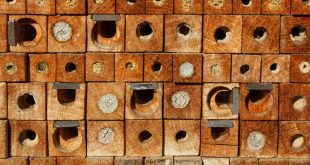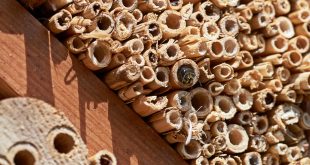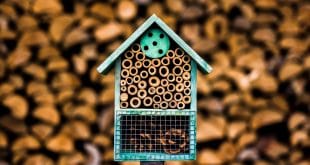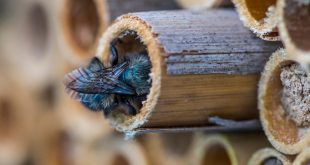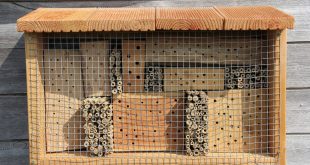Extras to mason bee houses such as these best mason beekeeping accessories help you provide best conditions for the solitary bees. Taking care of mason bees and meeting their needs requires you to go beyond just providing a suitable habitat. Use these accessories to get the best results in keeping mason bees. Mason bees that are taken good care of give you a thriving nest of pollinators. You get a large population of the bees every year and your plants are pollinated in the best way. The accessories are made using the best materials by reputable manufacturers. You are sure they work well and are safe for use with humans, insects and animals.
Read More »Natural Nesting Materials used by Mason Bees
Mason bees are solitary bees but can live near each other in nests. For best results in mason beekeeping, be sure to use the best mason bee nesting materials that you have access to. The best materials ensure that your starter population of mason bees flourishes and grows in number. Both beginner and experienced beekeepers can keep mason bees with ease. The bees work with most materials you will think of as long as they are natural and organic plant material. Even then, research indicates that some materials are more friendly and favorable to mason bees. They take to these materials quickly and build compartments more willingly. Pipes and tubes are the preference of mason bees. They love those that have a diameter of around 8 millimeters.
Read More »How to Clean a Mason Bee House
Of all the domesticated bees in existence, the mason bee is perhaps one of the easiest to manage and maintain. It neither demands sophisticated tools nor require specialized skills to keep. In most cases, the mason bee will demand maintenance that takes about 3 hours or less and this is done about once a year. Of course, this will depend on the number of mason bee houses you have. Mason bees are a target to many pests, parasites and predators, and hence the need for maintenance. This is carried out in the fall and winter months. In this article, we'll discuss how to clean a mason bee house and why it is important to do so.
Read More »Harvesting Mason Bee Cocoons – The Beginner’s Guide
The process of harvesting mason bee cocoons is an important one. Harvesting in this case does not mean honey harvesting. Mason bees are kept for purposes other than honey. They are beneficial solitary bees that are used for pollination purposes. As a matter of fact, mason bees are more efficient pollinators when compared to the honey bee and other types of bees. This species of the bee is easy to keep and is usually active in early spring, a time when other pollinators are not.
Read More »How to Make a Homemade Mason Bee House
The making of a homemade mason bee house is an exciting project that involves simple woodworking that will take just a few minutes to get through with. This is a project that the kids will love to take part in; watching the bees as they construct their nest will definitely give yourself and the kids a sense of fulfillment.
Read More » BeeKeepClub Resources and Guides for Beekeepers
BeeKeepClub Resources and Guides for Beekeepers
